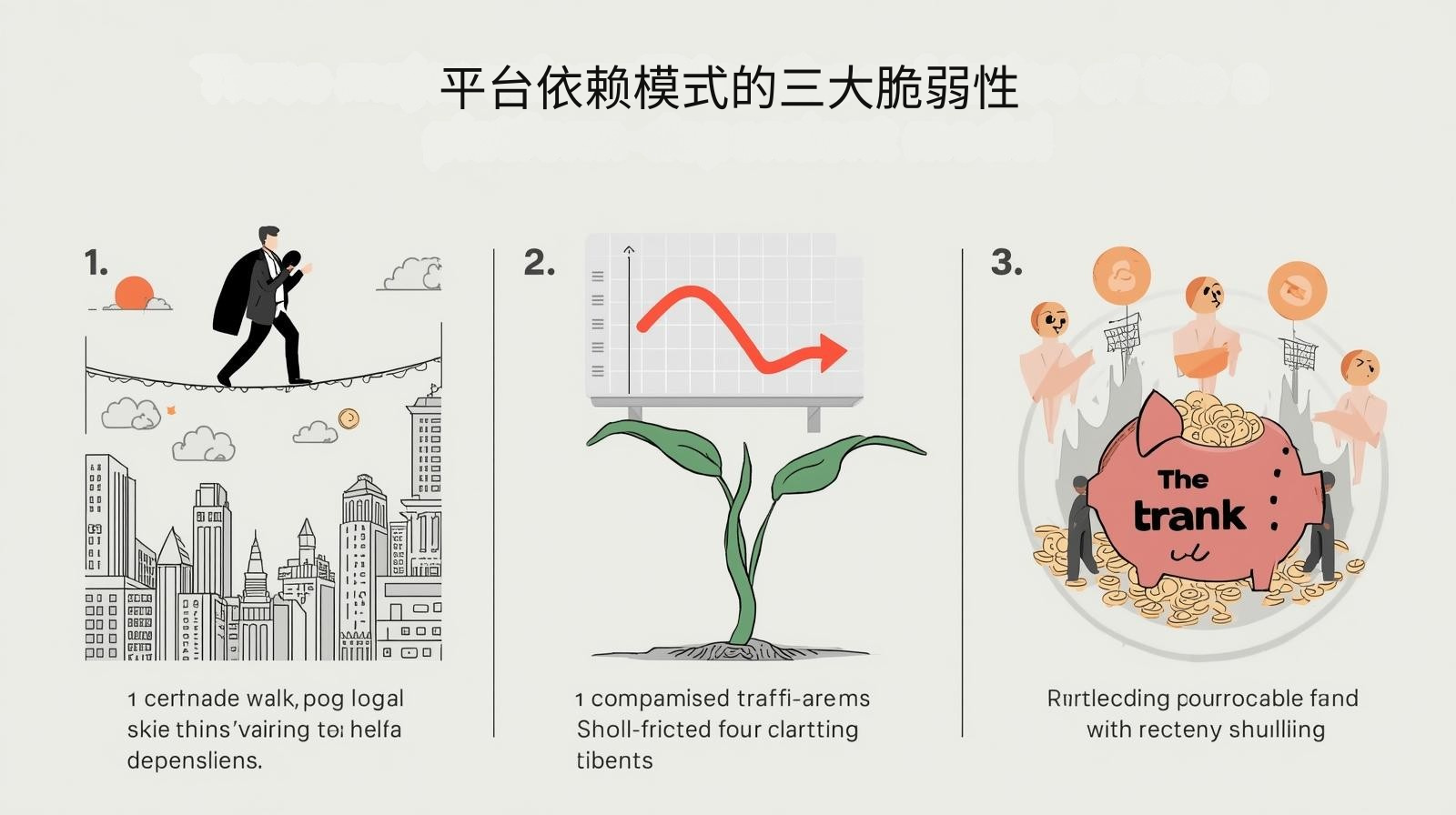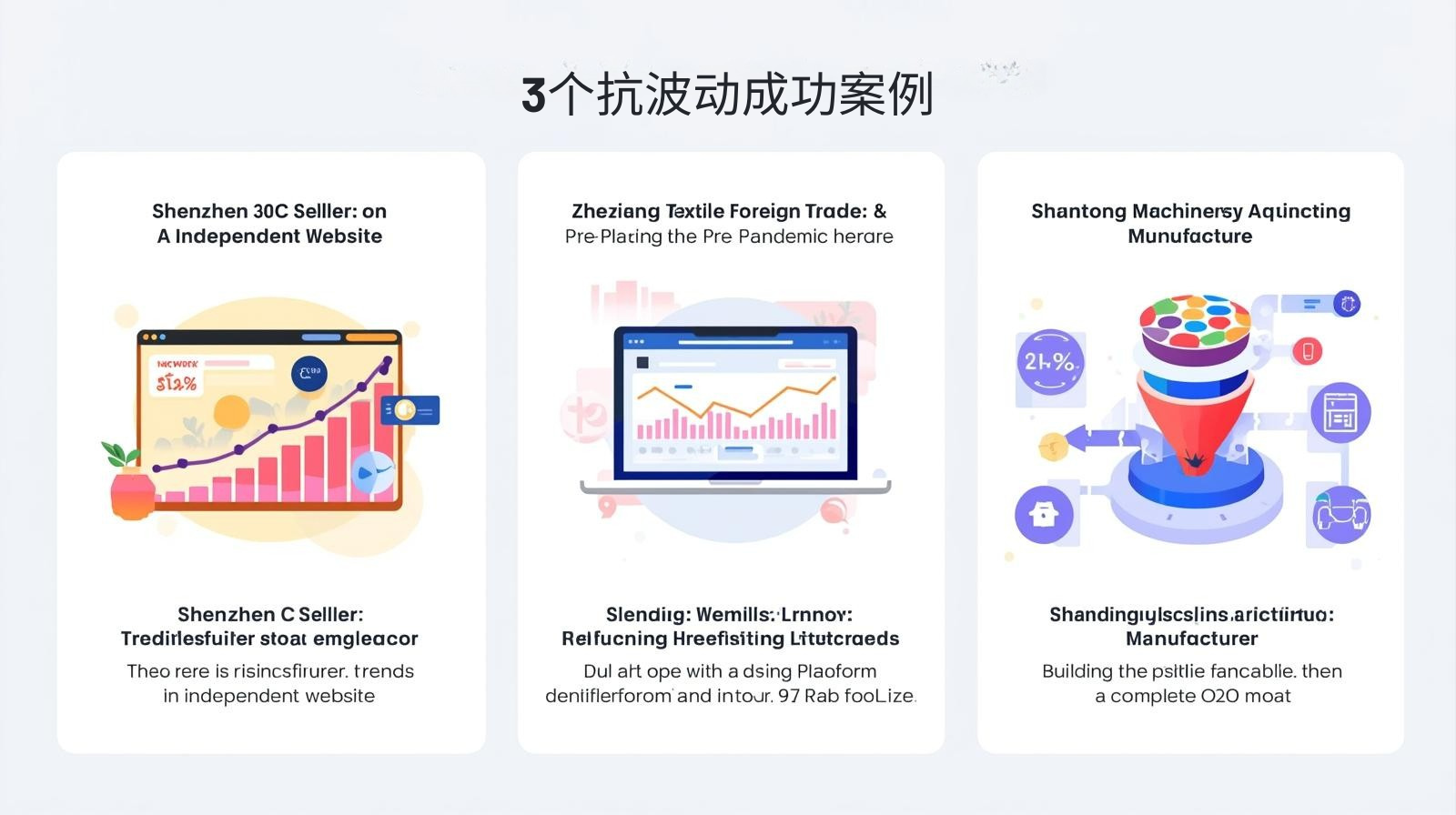McKinsey's "2024 Global Business Resilience Report" indicates that businesses with independent websites recover three times faster from emergencies than pure platform sellers, and experience 60% less revenue volatility. Research data from the China Council for the Promotion of International Trade shows that during the pandemic, foreign trade companies operating independent websites experienced a 75% customer retention rate, while pure platform sellers experienced a 45% churn rate. Research by the World E-Commerce Sustainable Development Alliance (WESDA) emphasizes that the unique value of independent websites in terms of traffic autonomy, data controllability, and operational flexibility make them essential resilience infrastructure for businesses in the digital economy.
 Three major vulnerabilities of the platform dependency model
Three major vulnerabilities of the platform dependency model
1. Risk of sudden ban
- A major brand suffered a single-day loss of tens of millions due to a sudden change in platform policy (China Cross-border E-commerce Industry Alliance case study)
- The appeal cycle is long and the results are uncontrollable
2. Traffic lifeline is restricted
- Algorithm adjustments caused a sharp drop in organic traffic (a clothing brand's search ranking plummeted)
- Advertising costs are soaring due to unpredictability
3. Hollowing out of data assets
- User information cannot be stored (a certain appliance brand's 2 million customer data cannot be exported)
- Secondary marketing costs increased by 300%
The three pillars of business continuity for independent stations
1. Traffic autonomy
- Direct customer acquisition through search engines (natural traffic for a certain tool brand accounts for 40%)
- Social media diversified traffic diversion
- Email marketing efficient conversion
Experts from the Digital Trade Department of the China Council for the Promotion of International Trade pointed out: "Amid the massive platform closures in 2023, 85% of companies with independent websites will be able to maintain more than 60% of their revenue."
2. Data asset accumulation
- 100% control of first-party data (a maternity and baby brand has a 65% private domain repurchase rate)
- Full-link analysis of user behavior
- Precision remarketing system
A case study by the World E-Commerce Sustainable Development Alliance (WESDA) shows that during a sudden crisis, the business recovery cycle of companies using independent websites is shortened to 1/3 of that of platform sellers on average.
3. Operational flexibility
- Rapidly adjust product strategies (a brand of epidemic prevention supplies completed category switching in two weeks)
- Immediate response to pricing strategies
- Payment logistics independent choice
 3 successful cases of anti-volatility
3 successful cases of anti-volatility
Case 1: Shenzhen 3C seller
- After the platform closed its stores, the independent station took over 80% of the orders
- Performance returned to pre-epidemic levels within 3 months
Case 2: Zhejiang Textile Foreign Trade
- Independent station + platform dual-track operation
- During the epidemic, the performance grew by 30% against the trend
Case 3: Shandong machinery manufacturer
- Independent station acquires customers and feeds back to offline
- Build a complete O2O moat
Pinshop Solution
Pinshop provides: ✅ Omni-channel traffic management system ✅ Data asset sedimentation center ✅ Emergency response fast channel ✅ Risk warning smart dashboard
Visit Pinshop's official website now to build your business breakwater!
Recommended related articles: Multilingual Independent Station Strategy: Balancing Localization and Internationalization 






